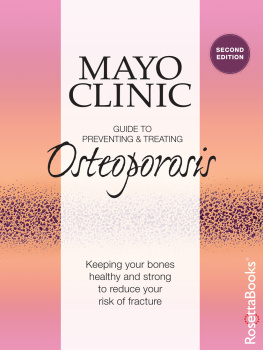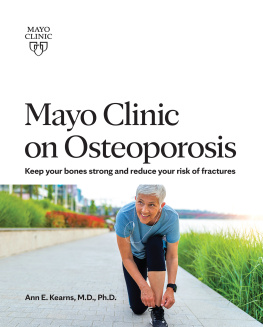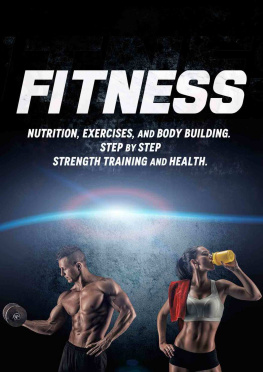
Text copyright 2016 Karl Knopf. Photographs copyright 2016 Rapt Productions except as noted below. Design and concept copyright 2016 Ulysses Press and its licensors. All rights reserved. Any unauthorized duplication in whole or in part or dissemination of this edition by any means (including but not limited to photocopying, electronic devices, digital versions, and the Internet) will be prosecuted to the fullest extent of the law.
Published in the United States by:
Ulysses Press
P.O. Box 3440
Berkeley, CA 94703
www.ulyssespress.com
ISBN: 978-1-61243-574-9
Library of Congress Control Number: 2015952113
10 9 8 7 6 5 4 3 2 1
Acquisitions editor: Kelly Reed
Managing editor: Claire Chun
Editors: Lily Chou, Lauren Harrison
Proofreader: N.E. Jaster
Indexer: Sayre Van Young
Front cover/interior design and layout: what!design @ whatweb.com
Cover photographs: front kurhan/shutterstock.com; back Rapt Productions
Interior photographs: Rapt Productions except pages 67, 74, and 77 (wall squat) Robert Holmes
Models: James Groleau, Toni Silver, Kym Sterner
Please note: This book has been written and published strictly for informational purposes, and in no way should be used as a substitute for consultation with health care professionals. You should not consider educational material herein to be the practice of medicine or to replace consultation with a physician or other medical practitioner. The author and publisher are providing you with information in this work so that you can have the knowledge and can choose, at your own risk, to act on that knowledge. The author and publisher also urge all readers to be aware of their health status and to consult health care professionals before beginning any health program.
This book is independently authored and published. No sponsorship or endorsement of this book by, and no affiliation with any trademarked brands or products mentioned or pictured, is claimed or suggested. All trademarks that appear in this book belong to their respective owners and are used here for informational purposes only. The author and publisher encourage readers to patronize the quality brands and other products mentioned and pictured in this book.
Table of Contents
Guide
Table of Contents
Osteoporosis is Latin for porous bone. Its a silent condition with no outward symptoms, and that causes the bones to become weak, brittle, and easily breakable. In people with osteoporosis, bones can break from a minor fall, or even a simple cough can fracture a rib. In older men and women, osteoporosis can sometimes be an indirect cause of death, but more often its a cause of a decreased quality of life.
The good news is that today, treatments for osteoporosis, as well as methods to prevent it, are available. And one of the easiest, least expensive treatments is weight-bearing exercise.
What Are Bones?
After we grow up, most of us forget about our bones. But in order to understand osteoporosis, its important to think about our bones and understand what they really are.
Bone is living, growing tissue. Throughout our lives, our bodies are continually breaking down old bone and rebuilding new bone. When were young, we gain more bone than we lose. Bones then progressively increase in density until a maximum level is reached, usually around age 30. But after about age 35, things change, and we start to lose more bone than we make. Over time, this causes bone density to slowly decrease, and bones become more brittle. In a lifetime, a woman may lose up to 38% of peak bone mass, whereas a man may lose only 23%.
Bone density is much like a honeycomb. A person with good bone strength will have a tightly woven bone matrix, whereas someone with osteoporosis will have big gaps in the honeycomb that make it weak.
The Bone Bank Account
The bones you build today are the same ones youll need to stand on in the future. Think of bone as a bank account where you deposit and withdraw bone tissue. During childhood and the teenage years, new bone is added to the skeleton faster than old bone is removed. As a result, bones become larger, heavier, and denser. For most people, bone formation continues at a faster pace than removal until bone mass peaks during the third decade of life.
In order to be able to make deposits of bone tissue and reach the greatest possible peak bone mass, you need to get enough calcium, vitamin D, and exerciseimportant factors in building bone. After age 35, bone withdrawals can begin to exceed deposits. For many people, this bone loss can be prevented by continuing to get calcium, vitamin D, and exercise, and by avoiding tobacco and excessive alcohol use. Osteoporosis develops when bone removal occurs too quickly or replacement occurs too slowly, or both. Youre more likely to develop osteoporosis if you didnt reach your maximum peak bone mass during your bone-building years.
Bone Terminology
Throughout life, your bones are constantly renewed through a two-part process called remodeling. This process consists of reabsorption and formation. During reabsorption, old bone tissue is broken down and removed by special cells called osteoclasts. During bone formation, new bone tissue is laid down to replace the old. Special cells called osteoblasts perform this task. By the time most women, in particular, reach 35 years of age, their mass accumulation has reached its peak. After that, bone remodeling begins to reverse and more bone mass is lost than remodeled.
Several hormones regulate osteoclast and osteoblast function: parathyroid hormone, vitamin D, estrogen (in women), and testosterone (in men), among others. In women, after menopause and the loss of estrogen, bones inner mesh becomes increasingly thinner, weaker, and more brittle.
OSTEOCLASTS: From the Greek words for bone and broken, osteoclasts are cells that invade the surface of bone and remove the matrix and minerals, leaving small cavities in the bone surface during bone reabsorption.
OSTEOBLASTS: From the Greek words for bone and germ, or embryonic, these are cells that fill small cavities in the bone surface with new bone during bone formation.
CORTICAL BONE: The hard, strong outer shell of bone.
TRABECULAR BONE: This is the interior portion of bone with a spongy, honeycomb-like appearance. Its found primarily in the wrist, spine, and hip.
KYPHOSIS: An outward manifestation of osteoporosis, kyphosis is an abnormal curve of the upper-back region. A person with a kyphotic curve displays a hunched-over appearance in the upper-back region. Another outward manifestation of osteoporosis is when a woman notices that her dress hems are longer than they were last year. This loss in height can be a result of compression fractures of her spine due to osteoporosis.
Who Gets Osteoporosis?
Just about everyone! Its an equal-opportunity disease.
Most people think that osteoporosis is only a concern for women, but did you know that one out of four men over the age of 50 could develop a fracture in his lifetime? While osteoporosis can lead to an increased risk of fractures of the hip, spine, and wrist in women, men are susceptible to the same effects from a less-than-ideal lifestyle as are women, including poor diet choices over a lifetime, smoking, drinking too much, and lack of weight-bearing exercise.
Unfortunately, men never seem to discuss this topic with their health professional. While 20% of all hip fractures occur in men, any bone can be affected. Men generally have a higher bone mass than do females overall and dont experience the rapid loss as do women as a result of menopause. Unfortunately, for men osteoporosis goes undetected until much later in life, often after preventive measures couldve been employed. Mens bones like the same things that womens bones do: a healthy diet including calcium and vitamin D, along with a sensible dose of weight-bearing exercise and resistance training. Both men and women should consult their health professional about the proper intake of calcium and vitamin D, which often depends upon age and health history. Nobodys bones needs to have their owner drink too much, and especially to be a smoker.









